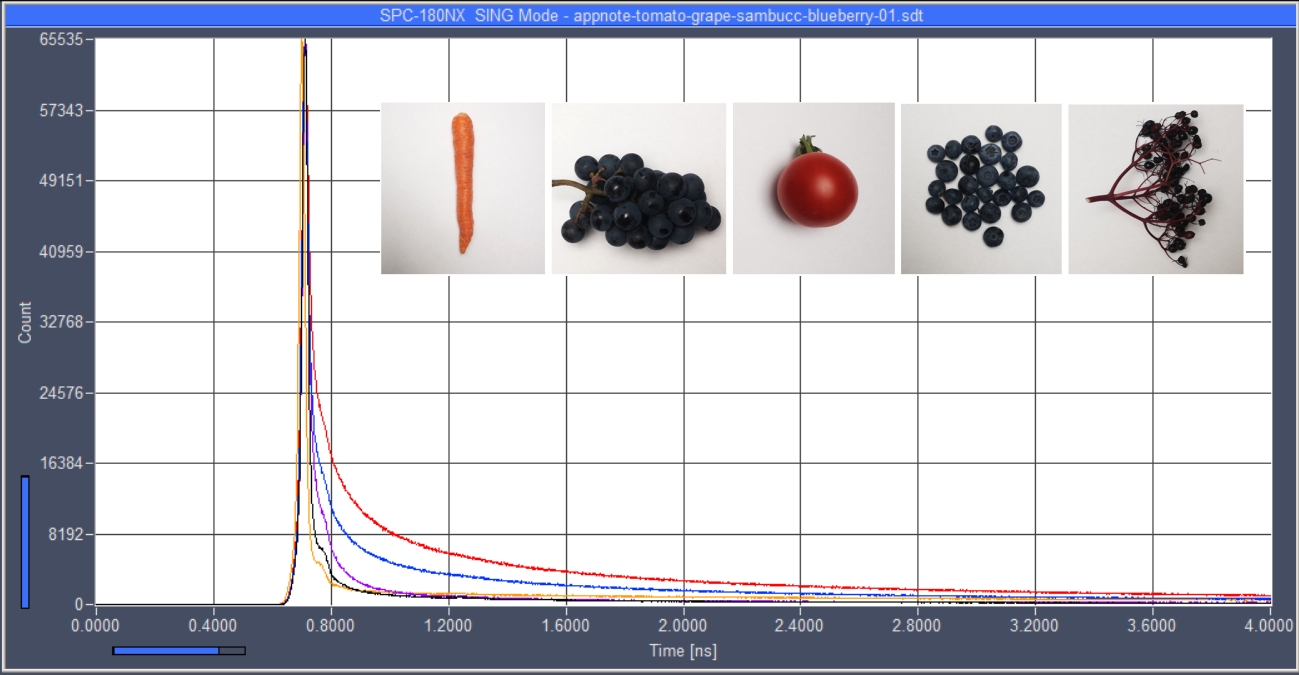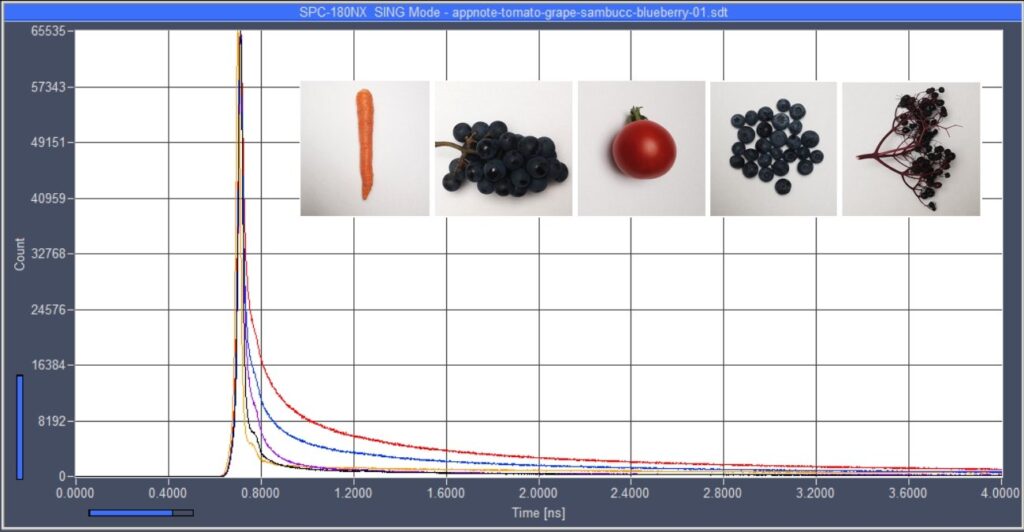Carotenoids are present in almost any live species on this planet. Carotenoids assist photosynthesis in plants and algae, provide colour to fruits and animals, and act as scavengers of reactive oxygen species. In mammals carotenoids are present in almost all organs. Due to their biological relevance, it would be desirable to obtain molecular information on the function of carotenoids in live systems via fluorescence. However, the quantum efficiency of carotenoids is very low. Therefore recording fluorescence from carotenoids is usually considered difficult or even impossible. However, the low quantum efficiency is less of a problem if time resolved detection with a temporal resolution in the lower ps range is used. The fluorescence then shows up as an ultra-fast decay component.
To demonstrate fluorescence recording from carotenoids we used the bh DCS-120 MP multiphoton system with fs-laser excitation and ultra-fast detectors. The instrument-response function of this system is faster than 20 ps FWHM. We were able to record carotenoid fluorescence from a variety of natural sources, such a carrot, grapes, tomato, blueberry, elder, and egg yolk. In all cases, the fluorescence was dominated by fast decay components, with lifetimes down to 8.6 ps and amplitudes up to 99%. For more information please download application note.



